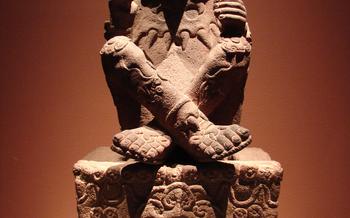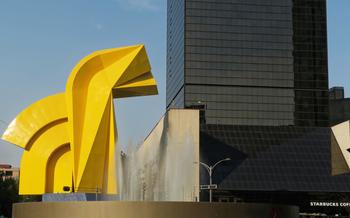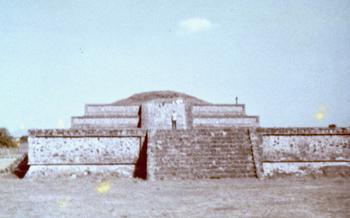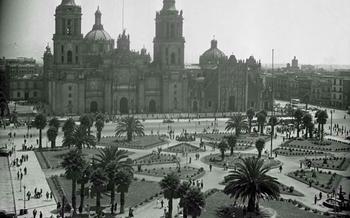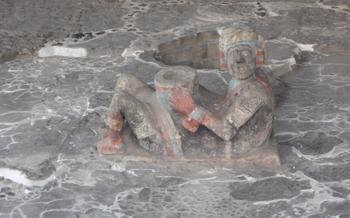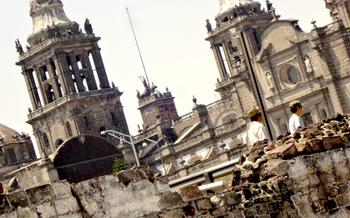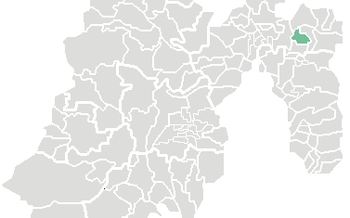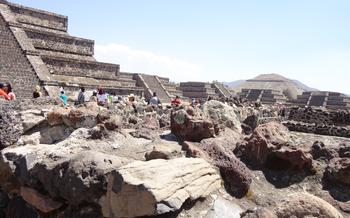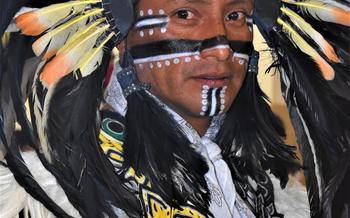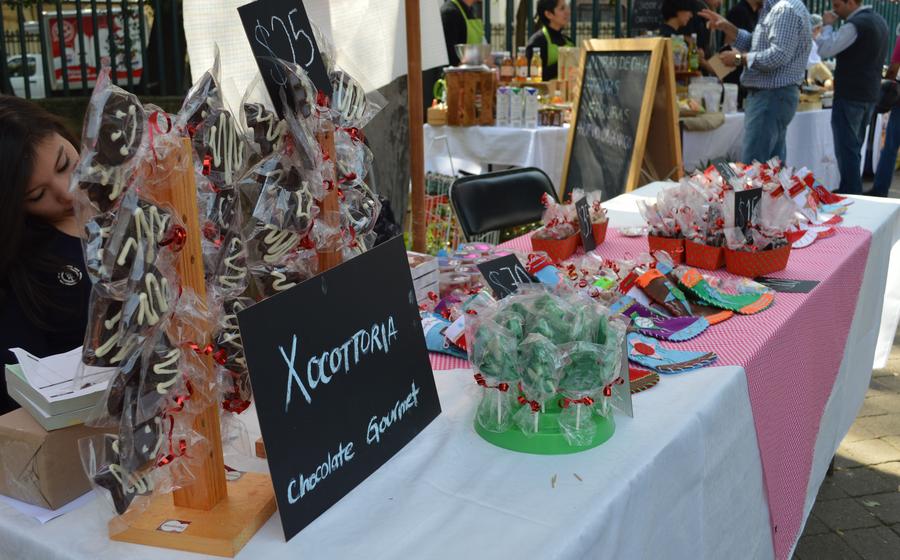
Museo del Chocolate
- Museo del Chocolate: A Sweet Journey through Mexican History and Culture
- Location and Accessibility
- Hours of Operation and Admission Fees
- Exhibits and Displays
- Chocolate-Making Demonstrations: Unveiling the Secrets of Mexican Chocolate
- Chocolate Tasting Experiences
- Chocolate Workshops and Classes
- Family-Friendly Activities
- Historical and Cultural Significance
- Sustainability and Ethical Practices
- Accessibility for All
- Online Resources and Virtual Experiences
- Local Recommendations and Hidden Gems
- Insider Tip: Chocolate Pilgrimage
Museo del Chocolate: A Sweet Journey through Mexican History and Culture
In the heart of Mexico City, nestled amidst vibrant streets and historical landmarks, lies a treasure trove for chocolate lovers: the Museo del Chocolate. This unique museum takes you on a journey through the rich history, cultural significance, and delectable flavors of Mexican chocolate. Delve into the ancient origins of chocolate, where it was revered as a sacred food by the Maya and Aztec civilizations. Explore interactive exhibits showcasing the meticulous process of chocolate making, from harvesting cocoa beans to transforming them into the beloved confection we know today. Discover the vast array of chocolate varieties produced in Mexico, from traditional dark chocolate to unique regional specialties infused with local ingredients. And don't miss the opportunity to learn about the health benefits of chocolate and its essential role in Mexican cuisine. Prepare your taste buds for a sweet adventure as you embark on this immersive journey into the world of Mexican chocolate.
Location and Accessibility
The Museo del Chocolate is conveniently located in the heart of Mexico City, at Calle República de Guatemala 44, Centro Histórico de la is Zócalo, which is served by Line 2 (blue line). From the station, it is just a short walk to the museum. Alternatively, visitors can take a taxi or ride-sharing service to reach the Museo del Chocolate.
For those driving, there are several parking garages located within a short distance of the museum. The nearest parking garage is Estacionamiento República de Guatemala, which is located just one block away.
Hours of Operation and Admission Fees
The Museo del Chocolate is open from 10 AM to 6 PM, Tuesday through Sunday. The museum is closed on Mondays and major holidays. Admission fees are as follows:
- Adults: $100 MXN (Mexican pesos)
- Children (3-12 years old): $50 MXN
- Students (with valid ID): $75 MXN
- Seniors (60+ years old): $75 MXN
The museum offers a 50% discount for groups of 10 or more visitors and free admission for children under 3 years old. Guided tours are available for an additional fee and must be booked in advance.
Exhibits and Displays
The Museo del Chocolate showcases a diverse collection of exhibits and displays that take visitors on a journey through the world of chocolate. Permanent exhibits delve into the history of chocolate in Mexico, from its pre-Columbian origins to its modern-day popularity. Interactive displays allow visitors to engage with the exhibits, learning about the process of chocolate making, from harvesting cocoa beans to conching and tempering.
Among the highlights of the museum's collection is a replica of an ancient Mayan chocolate mill, demonstrating the traditional methods used to grind cocoa beans into a paste. Visitors can also admire a collection of antique chocolate-making tools and machinery, offering a glimpse into the evolution of chocolate production over the centuries.
Temporary exhibits at the Museo del Chocolate explore various aspects of chocolate culture, from regional specialties to innovative chocolate creations. These exhibits often feature collaborations with renowned chocolatiers, showcasing their unique talents and pushing the boundaries of chocolate artistry.
The curatorial team at the Museo del Chocolate takes great care in selecting and presenting exhibits that not only educate and inform but also inspire and engage visitors. Each exhibit tells a story, revealing the deep connection between chocolate and Mexican history, culture, and identity.
Chocolate-Making Demonstrations: Unveiling the Secrets of Mexican Chocolate
At the Museo del Chocolate, visitors have the rare opportunity to witness live demonstrations of chocolate making, a captivating process that transforms humble cocoa beans into the delectable treat we know and love. Skilled chocolatiers take center stage, guiding visitors through the journey from bean to bar. They begin by roasting the cocoa beans, releasing their rich aroma into the air. The roasted beans are then cracked and winnowed to separate the nibs from the shells. These nibs, the heart of the chocolate, are ground into a smooth paste using traditional stone grinders or modern machinery.
The resulting chocolate liquor, a thick and concentrated paste, is the foundation for various chocolate products. To create chocolate bars, the liquor is mixed with sugar and other ingredients, such as milk or nuts, depending on the desired flavor profile. The mixture is then conched, a crucial step that involves continuous mixing and kneading to develop a smooth and velvety texture. Finally, the chocolate is tempered, a process of controlled heating and cooling that stabilizes the chocolate and gives it a glossy finish.
Throughout the demonstration, visitors can engage with the chocolatiers, asking questions and learning about the intricacies of the chocolate-making process. They can observe the transformation of simple ingredients into a complex and delicious treat, gaining a deeper appreciation for the skill and artistry involved in chocolate making.
Chocolate Tasting Experiences
Indulge in a delightful journey of flavors at the Museo del Chocolate's chocolate tasting sessions. Led by experienced chocolatiers, these sessions offer a unique opportunity to savor the diverse range of Mexican chocolates. From traditional dark chocolate to unique regional specialties, each tasting session is a celebration of Mexican chocolate heritage.
Visitors will learn about the different cocoa varieties, roasting techniques, and conching processes that contribute to the distinct flavors of each chocolate. The tasting experience is carefully curated to showcase the subtle nuances and complexities of Mexican chocolate. Participants will learn to identify and appreciate the unique flavor profiles, textures, and aromas of each variety.
Special pairings of chocolate with other ingredients, such as fruits, nuts, and spices, enhance the tasting experience. These pairings allow visitors to explore the versatility of chocolate and discover new flavor combinations.
The chocolate tasting sessions are not just about tasting; they are also about understanding and appreciating the cultural significance of chocolate in Mexico. Visitors will gain insights into the role of chocolate in Mexican cuisine, history, and traditions.
Whether you are a chocolate connoisseur or simply curious about the world of chocolate, the Museo del Chocolate's tasting sessions offer an unforgettable and educational experience.
Chocolate Workshops and Classes
The Museo del Chocolate offers a range of chocolate-making workshops and classes, catering to various skill levels, from complete beginners to experienced chocolatiers. These hands-on sessions provide participants with an immersive experience, allowing them to learn the art of chocolate making under the guidance of skilled instructors.
Beginners can start with introductory classes that cover the basics of chocolate making, including selecting and roasting cocoa beans, grinding them into a smooth paste, and tempering the chocolate to achieve the perfect texture. As participants progress, they can advance to more specialized classes, where they learn to create intricate chocolates, bonbons, truffles, and other delectable treats.
The museum's chocolate-making workshops are not just about learning a new skill; they are also a journey into the rich history and cultural significance of chocolate in Mexico. Participants gain insights into the traditional methods used by ancient Mesoamerican civilizations to craft chocolate and how these techniques have evolved over time.
Whether you are a passionate chocolate lover, an aspiring chocolatier, or simply looking for a unique and educational experience, the Museo del Chocolate's workshops offer an unforgettable opportunity to immerse yourself in the world of chocolate.
Family-Friendly Activities
The Museo del Chocolate is a delightful destination for families with children of all ages. The museum offers an array of interactive exhibits and activities designed to engage and educate young visitors. Kids can learn about the history of chocolate, its cultural significance, and the process of chocolate making through hands-on experiences.
One of the highlights for children is the opportunity to participate in chocolate-making demonstrations. They can watch skilled chocolatiers transform cocoa beans into delicious chocolate, and even try their hand at making their own chocolate creations. The museum also offers chocolate-themed games, puzzles, and quizzes that make learning about chocolate fun and interactive.
For a truly immersive experience, families can book a chocolate-making workshop. These workshops are tailored to different age groups and skill levels, allowing children to learn the art of chocolate making under the guidance of experienced chocolatiers. They can create their own chocolate bars, truffles, or other chocolate treats, which they can take home and enjoy.
The Museo del Chocolate is not just a place to learn about chocolate; it's also a place to have fun and create lasting memories. With its interactive exhibits, hands-on activities, and delicious chocolate treats, the museum is a must-visit for families looking for a unique and educational experience in Mexico City.
Historical and Cultural Significance
The Museo del Chocolate is not just a museum about chocolate; it is a testament to the deep connection between chocolate and Mexican history, traditions, and identity. Chocolate has been an integral part of Mexican culture for centuries, dating back to the ancient Mesoamerican civilizations. The Olmecs, Mayans, and Aztecs all revered chocolate, using it in religious ceremonies, as a form of currency, and as a delicious treat.
The museum showcases this rich history through exhibits on the origins of chocolate, its cultivation and trade, and its cultural significance. Visitors can learn about the role of chocolate in Aztec mythology, where it was believed to be a gift from the gods. They can also see how chocolate was used in traditional Mexican medicine and as a symbol of love and friendship.
The museum also hosts cultural events and festivals that celebrate Mexican chocolate heritage. These events often feature live music, dance performances, and chocolate-themed workshops. Visitors can immerse themselves in the vibrant world of Mexican chocolate and experience its unique flavors and traditions firsthand.
Whether you are a chocolate lover, a history buff, or simply someone who wants to learn more about Mexican culture, the Museo del Chocolate is a must-visit. It is a place where you can taste the deliciousness of chocolate, explore its rich history, and discover its deep cultural significance in Mexico.
Sustainability and Ethical Practices
The Museo del Chocolate is committed to promoting sustainable and ethical practices in the chocolate industry. The museum collaborates with local cocoa farmers and communities to ensure fair trade and support organic farming practices. It promotes environmentally friendly production methods, reducing the ecological footprint of chocolate production. The museum's initiatives contribute to a sustainable future for the chocolate industry, ensuring the preservation of traditional techniques while respecting the environment and the well-being of cocoa growers.
Accessibility for All
The Museo del Chocolate is committed to providing an inclusive and accessible experience for all visitors. The museum is wheelchair-accessible, with ramps and elevators available throughout the building. Accessible restrooms are also provided for the convenience of visitors with disabilities.
For visitors with hearing or visual impairments, the museum offers sign language interpretation and audio descriptions upon request. Guided tours can also be customized to accommodate the needs of visitors with disabilities, ensuring that everyone can enjoy and learn from the museum's exhibits and programs.
The museum staff is always happy to assist visitors with disabilities, providing any necessary support or information to make their visit as enjoyable and accessible as possible.
Online Resources and Virtual Experiences
Enrich your chocolate journey beyond the museum walls by exploring the Museo del Chocolate's online resources. Their comprehensive website offers a wealth of information about the history, culture, and production of Mexican chocolate. Take virtual tours of the museum's exhibits, delving into the interactive displays and learning about the significance of chocolate in Mexican society. Engage with the museum's social media channels to stay updated on upcoming events, workshops, and special promotions.
For those unable to visit in person, the museum's virtual experiences bring the sweet aroma of chocolate to your doorstep. Immerse yourself in online exhibitions showcasing the museum's collection of artifacts and artworks related to chocolate. Access educational resources, including videos, articles, and downloadable materials, to deepen your understanding of Mexican chocolate culture.
Whether you're planning a visit or exploring from afar, the Museo del Chocolate's online presence ensures that the delightful world of Mexican chocolate is always within reach.
Local Recommendations and Hidden Gems
After exploring the Museo del Chocolate, immerse yourself further into the city's chocolate scene by venturing to nearby restaurants, cafes, and shops. For a delightful culinary experience, head to La Casa del Chocolate, known for its rich hot chocolate and decadent chocolate desserts. ChocoMuseo, located in the trendy Roma Norte neighborhood, offers chocolate-making workshops and a cozy café serving artisanal chocolate treats.
To discover hidden gems, explore the quaint streets of the historic center, where you can find small chocolate shops tucked away among colonial buildings. La Puerta del Sol is a must-visit for its unique chocolate sculptures and handcrafted chocolates. For a taste of traditional Mexican chocolate drinks, visit Café de Tacuba, a century-old establishment serving up frothy champurrado and rich chocolate atole.
To fully immerse yourself in Mexico City's chocolate culture, join a guided chocolate tour. These tours take you to local markets, chocolate factories, and hidden gems, allowing you to sample different types of chocolate and learn about the city's chocolate-making traditions.
Insider Tip: Chocolate Pilgrimage
For a truly immersive chocolate experience, embark on a pilgrimage to the ancient city of Teotihuacan, located just an hour northeast of Mexico City. Teotihuacan, a UNESCO World Heritage Site, was once a thriving metropolis and the birthplace of some of the earliest chocolate-making traditions in Mexico. Visitors can explore the ruins of ancient temples and palaces, including the Temple of Quetzalcoatl, where archaeologists have discovered evidence of chocolate production dating back to the 4th century BC. Take a guided tour to learn about the significance of chocolate in Teotihuacan culture and visit local markets to sample traditional chocolate beverages and snacks. This pilgrimage offers a unique opportunity to connect with the roots of Mexican chocolate history and experience the deep cultural significance of this beloved treat.
